
:: Mars ::
Mars is the 4th planet from the Sun. It is named after the Roman god of war, most likely because of its red appearance.
Although Mars is just one fifth of the size of the Earth, it has many things in common. Mars has seasons very similar to earth, it has a spring, summer, autumn and a winter. This is due to the rotational tilt of the planet being nearly the same as Earths. Because Mars is further from the Sun than the Earth it takes longer to orbit around it. In fact Mars takes nearly twice as long to orbit the Sun as the Earth does. Because of this, 1 year on Mars is the equivalent to nearly 2 years on Earth (687 Earth days).
Main features on Mars
Olympus Mons: Mars is home to the biggest known mountain in the solar system. Olympus Mons stands about 27km (16.77 miles) high! This is about 3 times as high as Mount Everest which stands at 8.8km (5.47 miles).
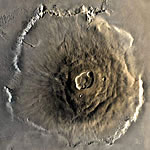
|
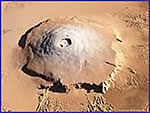 |
 |
Valles Marineris: The Valles Marineris was named after the Mariner 9 Mars orbiter which discovered it in 1971 / 72. Valles Marineris is a canyon that is over 4000km (2480 miles) long and more than 200 km (124 miles) wide. That makes this canyon the biggest known canyon in the solar system.
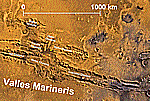
|
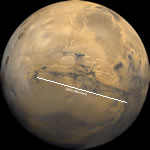 |
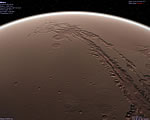 |
How to find Mars with your telescope.
Mars follows a very similar orbit around the Sun to the Earth but takes nearly twice as long to complete. This is because Earth orbits closer to the Sun than Mars so it has less distance to cover to complete a full orbit (Earth has the inside track).
Take a look at the illustrations below:
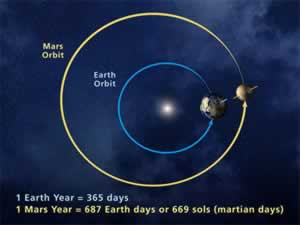 Figure 1: Earth vs Mars orbitting pattern |
|
||||||||||||||||||||||||||||||||||||
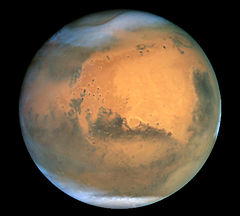
:: Facts ::
Mars is the 4th planet from the Sun.
Mars was named after the Roman god of war. Probably because of its redish colour
Diameter: 6794.4 km (roughly half the size of Earth
Martian Day: 24 hours, 39 minutes and 35 seconds
Martian Year: 685 Earth days, 18 hours.
Orbits the Sun every 687 days (1 year)
Average Distance from Sun: 142 million miles
Temperatures vary from -200°F to up to 68°F in the summer.
Mars has two moons, Phobos and Deimos